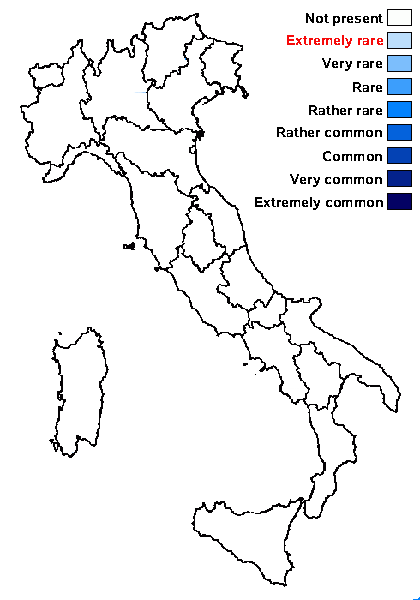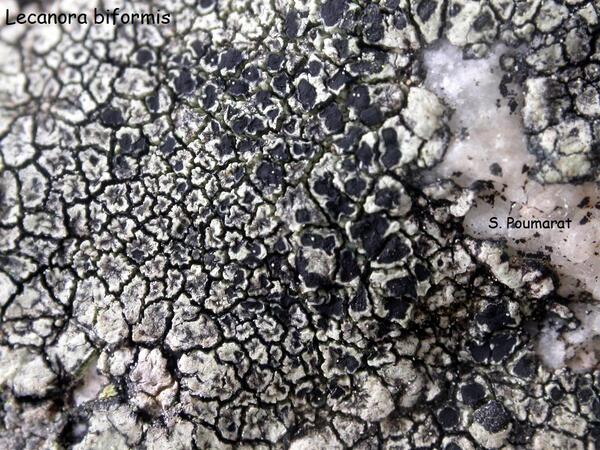Lecanora biformis (Ramond) Clauzade & Cl. Roux
Bull. Soc. bot. Centre-Ouest, Nouv. sér., n. spec. 7: 826, 1985. Basionym: Lichen biformis Ramond - in Lamarck & de Candolle, Fl. franç., 3rd ed., 2: 353, 1805
Synonyms:
Distribution:
Description: Thallus crustose, episubstratic, areolate or rimose-areolate, whitish with a more or less evident yellowish tinge. Medulla white, I-. Apothecia 0.2-0.6(-1) mm across, long remaining immersed in the thallus and appearing almost aspicilioid, then adnate and only slightly projecting, with a concave to flat, black disc and a thin, poorly visible, soon excluded proper margin, without a distinct thalline margin. Proper exciple thin, dark brown in outer part; epithecium green, N+ red; hymenium colourless, 40-55 µm high; paraphyses weakly coherent, mostly simple; hypothecium colourless. Asci 8-spored, clavate, Lecanora-type. Ascospores 1-celled, hyaline, ellipsoid, 8.5-13 x 4.5-7 µm. Photobiont chlorococcoid. Spot tests: cortex and medulla K+ more or less intensively yellow, C-, KC+ yellow, P-. Chemistry: unknown.Note: on siliceous rocks in upland areas; reported from a few localities in the Western Alps (France), but perhaps not recognised elsewhere; to be looked for in the Italian Alps.
Growth form: Crustose
Substrata: rocks
Photobiont: green algae other than Trentepohlia
Reproductive strategy: mainly sexual

Predictive model
Growth form: Crustose
Substrata: rocks
Photobiont: green algae other than Trentepohlia
Reproductive strategy: mainly sexual

Predictive model
 Index Fungorum
Index Fungorum
 GBIF
GBIF


